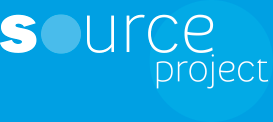
Contact Us
Marion Vansingle
SOURCE project coordinator
m.vansingle@borvo.com
Phone : + 33 (0)4 73 34 70 71
Mobile Phone : + 33 (0)6 63 04 05 24

Starting with the Enghien-les-Bains Café of Europe and lasting for two years, an interactive novel is being developed as part of the SOURCE project, as a way of engaging with the public in a form now known as transmedia. This approach is based on using various digital platforms: blogs, social media text, images and audio, as well as interactive maps. The novel will in some ways follow a definition by Ray Bradbury, author of Fahrenheit 451: science-fiction is a description of reality.
The spa towns themselves are settings for novels and film sets, and several authors have used them as canvases, even making them genuine characters, of sorts: Maigret, the famous detective, was set in Vichy by Georges Simenon; Dostoyevskys The Gambler was largely inspired by towns such as Baden-Baden or Wiesbaden; Guy de Maupassant based several of his novellas and the setting of the novel Mont-Oriol in Châtel-Guyon and Royat.
Four characters will travel around Europe, following the footsteps of better and lesser-known European historic figures who came across each other in the Cafés of Europe, these literary salons, places for discussion and meeting places which were the great thermal spas from the 18th Century to the early 20th Century; figures who also journeyed along the cultural routes of Europe. At the same time, they are veritable book people, like Bradburys characters. Each of them will carry their own multimedia centre, made possible by modern digital media, but throughout their journey they will encounter other book people, both contemporary and from the past, whose works, documents and memories need to be brought back to light, re-read, valued, in order to return to the Sources of Europe, and thus intercultural understanding of Europes shared heritage, history and memory.
During each Café of Europe, the characters will have the opportunity, through historic monuments and heritage that are just as much settings or stages, to meet the novelist, fans and followers who contribute to the novels writing through social media. These conversations will be open to the public, as well as local and regional media. The Novel, like all Travelogues, will constitute the base of an open discussion taking place in March 2015 at the Bath Literature Festival.
To create interaction between past and present, the four characters will develop a rapport be it professional, familial, passionate - with historical figures and will be their double, like the important role that dubbers voices play in films. These are: a writer in love with film and reading, in charge of collections for a European publisher who will therefore be the narrator a musician (as it happens, a young female musician), who can switch from classical music to pop or electro, a thermal doctor who is an advocate of alternative therapies, new cuisines and psychoanalysis, and finally a celeb, a playboy living mainly off his unearned income, descended from a princely lineage.
Naturally,omega replica watches it was necessary to possess enough elements in written form on the historic figures listed to be able to maintain a certain similarity of the contemporary routes. Furthermore, every one of them must have mastered various European languages in their time, to be able to interact both in the past and the present with the people they meet, and those they write to.
Due to the need for the fundamentals (proposed routes, story of these routes, gathering of fictional material, reading and putting into perspective ancient texts along the way, creating library-bedrooms/chambers, passing from one time to another ) to stay the same from one novel to another, and for all characters to be in constant connection with a sort of selection station, all journeys must be managed by one single person.
This person is a bookseller and PUBLISHER,replica watches who is choosing the editorial managers, narrators, multimedia writers who will collect travel stories, receive messages and shape them into a coherent editorial structure.
The PUBLISHER, who is from Strasbourg, who will only be referred to by this anonymous expression in capital letters, or by HIM or HE, also has direct links with the past himself, particularly with Gutenberg, since if his own ancestor and double invented printing, he himself broke new ground in publishing, with the help of new digital technologies.